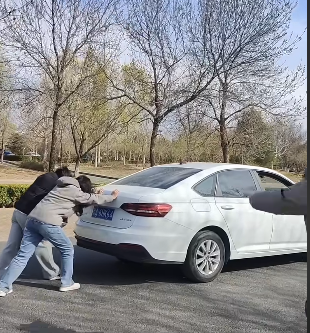
Seat belts are one of the most essential safety features in any vehicle. They have been saving lives for decades, drastically reducing injuries and fatalities in car accidents. However, simply having seat belts in your car is not enough — you must know how to use them properly to get their full benefits. In this guide, we’ll walk you through everything you need to know about using your car’s seat belts correctly, from basic usage to tips for special situations.

Why Seat Belts Are Important
Before diving into the how-to, it’s worth understanding why seat belts matter so much. In the event of a collision, seat belts hold you securely in place. They distribute the forces of a crash across the stronger parts of your body, like your chest, hips, and shoulders. Without a seat belt, you could be thrown against the dashboard, ejected from the car, or collide with other passengers.
According to the National Highway Traffic Safety Administration (NHTSA), seat belts reduce the risk of death by 45% for front-seat passengers and lower the risk of serious injury by 50%. So when you buckle up, you’re not just following the law — you’re making a life-saving choice.

Step-by-Step Guide to Using Your Seat Belt
1. Sit Upright
Before putting on your seat belt, make sure you are sitting properly in your seat. Sit upright with your back against the seat and your feet flat on the floor. Reclining too much can reduce the effectiveness of your seat belt in an accident.
2. Pull the Belt Across Your Body
Grab the seat belt with one hand and pull it smoothly across your body. The belt should come over your shoulder and chest and not your neck or face. It should also lay flat against your body without any twists.
3. Insert the Buckle
Once you have the belt across your body, take the metal tongue (the flat, metal end of the belt) and insert it into the buckle until you hear a “click.” Give the belt a gentle tug to ensure it is securely fastened.
4. Position the Belt Correctly
For maximum protection:
- The lap belt should lie snugly across your hips and upper thighs, not across your stomach.
- The shoulder belt should cross the middle of your chest and rest between your neck and shoulder.
If the belt is too close to your neck, you might be tempted to place it under your arm or behind your back — do not do this. It can lead to serious injuries in a crash.
5. Adjust If Necessary
Most modern vehicles have adjustable upper anchors for seat belts. If the shoulder belt is rubbing against your neck or slipping off your shoulder, adjust the height of the anchor so the belt sits comfortably across your chest.
6. Check Your Passengers
If you’re the driver, you are responsible for ensuring that all your passengers are buckled up, especially children. Double-check everyone before starting your journey.

Tips for Using Seat Belts Correctly
Avoid Twisted Belts
A twisted seat belt can cause uneven force distribution during a crash, leading to serious injuries. Make sure the belt lies flat against your body without any knots or twists.
Pregnant Women Should Wear Seat Belts Too
Pregnant women must wear seat belts. The lap belt should be placed under the belly, snug across the hips and pelvic bone. The shoulder belt should go between the breasts and to the side of the belly. Never place the belt across the belly.
Use Seat Belt Adjusters for Better Fit
If you find that the seat belt doesn’t fit you properly (especially if you are shorter), you can buy seat belt adjusters. These devices help position the belt correctly without compromising safety.
Replace After an Accident
Even if a seat belt doesn’t appear damaged after a crash, its integrity might be compromised. Always replace any seat belt that has been involved in an accident, even minor ones.
Don’t Share a Seat Belt
Never let two people (for example, two kids) share a single seat belt. Each passenger must have their own properly fitted belt.
Special Considerations for Children
Children require special seat belt arrangements based on their age, weight, and height.
- Infants and toddlers should ride in a rear-facing car seat.
- Young children should use a forward-facing car seat with a harness.
- Older children who have outgrown car seats should use a booster seat until the vehicle’s seat belt fits properly (typically when they are 4 feet 9 inches tall).
- Teens should always wear seat belts, even in the back seat.
It’s important to follow the specific car seat and booster seat guidelines in your region to ensure maximum safety.

Common Mistakes to Avoid
Even though wearing a seat belt might seem simple, many people still make mistakes. Here are some errors to avoid:
- Putting the shoulder belt under your arm or behind your back.
- Not tightening the belt enough. A loose belt can allow too much movement during a crash.
- Wearing a seat belt over bulky clothing. In winter, remove heavy coats before buckling up.
- Using a damaged seat belt. Frayed webbing, broken buckles, or faulty retractors reduce the seat belt’s effectiveness.
- Assuming airbags replace seat belts. Airbags are designed to work with seat belts, not replace them. Without a seat belt, airbags alone can actually cause more harm.
Final Thoughts
Seat belts are a simple yet powerful tool for saving lives. Taking just a few seconds to buckle up — and to ensure your passengers do the same — can mean the difference between walking away from a crash and facing serious injury or worse.
Proper seat belt use is not just about legal compliance; it’s about valuing your life and the lives of those who ride with you. Always buckle up every time you get in the car, no matter how short the trip may be.
Your seat belt is your first line of defense on the road. Make it a habit, make it a priority, and make it second nature.


